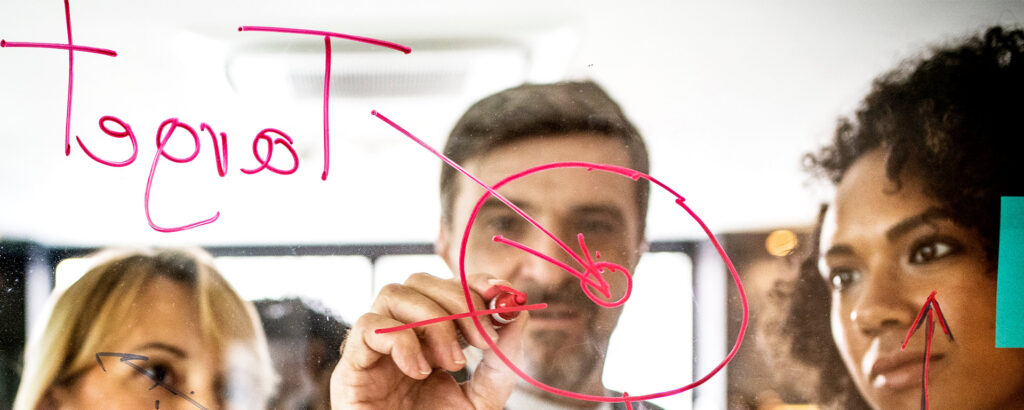Creating customer personas for your brand will help you know and better understand your ideal customer and their needs. Influence their buying behaviour and successfully convert them into becoming your customers.
Do you know who your customer is? For many businesses, this answer would be yes. But for many successful businesses, they not only know who their customer is, they also understand them inside out, their hobbies, interests, desires, fears, what they watch, listen and read. This is where customer personas come in handy.
Customer personas are fictional and generic representations of your ideal customers. Generating well-researched customer personas will help align all departments of your business by creating a clear picture of who your customer is and what their personal histories, motivations, and concerns are. Knowing this, you are then able to effectively position your offerings to their needs.
In this article, I will discuss the importance of creating customer personas for your business and the simple steps to get you thinking more in-depth on who your customer REALLY is.

Why is it Important to Understand who my Ideal Audience Is?
The most fundamental aspect of designing a successful business strategy is understanding your customers and their needs. It is not effective if you hope just anyone would pay for your bills. Don’t be vanilla. Be different.
Specifically, know and understand who your consumers are so you can focus your limited time and resources towards building relationships with the right people.
Understanding your ideal consumer will also assist your business in driving your consumers through the customer’s buying journey using personalised and appropriate marketing strategies. There is an array of marketing strategies available to help us reach our customers.
But if your ideal consumer doesn’t use Pinterest, what’s the need to digitally engage them on that platform? Time and resources are limited, especially for startups and small business, so work smart and really get to understand your customers.
In no time, you’ll be able to save money by keeping acquisition and retention costs lows all whilst achieving business growth.

Crucial digital marketing insights and strategies for the ‘new normal’
Futurise Insights are a suite of FREE power-packed webinars designed for small and mid-sized businesses struggling with innovation and growth.
Gaining insight into consumer buying behaviours and purchase patterns (such as what drives the basic and supplementary needs of consumers and what gratifies them) will help you connect your product and services to their basic needs and ensure those consumers will convert into your customers.
How do I Create my Consumer Personas?
So yes, knowing and understanding your ideal consumer is highly necessary for your business to succeed. But how do you start?
Our best tip to knowing and understanding your ideal consumer, is to go talk to your current and prospective customers (5-8 is a good start).
This form of marketing research is the easiest and most effective as it will give you a more accurate and truthful screening, enabling you to capture verbal, non-verbal, emotive and behavioural cues.
Below are some methods that can help you understand your customer better.

Ethnographic and Psychographic Research
Many businesses conduct ethnographic research to analyse their consumer’s age, gender, income, profession, location etc. Although this is a human-centered design approach that provides a basic framework to identify our target market, it is also important to gain insight from our consumer’s psychology. This has the power to differentiate your personas as it taps into your consumer’s lifestyle, behaviour and habits.
For example:
Traditional customer persona using ethnographic research: Betty is female, 30-50 years old, middle class, stay at home mother of 3 children.
New customer persona using both ethnographic and psychographic research: Anna is fitness savvy mother of 3 young energetic children, who enjoys biking and spending time with her family.
Knowing your customer’s persona will allow you to define when and how you interact with your target market. For example, Anna’s customer persona, you may want to post valuable and interesting content about bike safety and top durable and affordable bikes for children, for mums on forums and social media groups between 9:00am to 5:00pm during schooling hours.
For ethnographic and psychographic research, think about conducting surveys or interviews with your prospects, both good and bad customers and referrals.
Ask about their interests, hobbies, concerns and what drives them to your company and not your competitors. Be open to conduct both qualitative and quantitative research too.
Another way is Social Media. Going onto your customer’s Instagram or Twitter account, you can easily find a lot about your customer (unless of course their account is private).
The benefit of using social media networks is that people are more open and honest to share their likes, dislikes and current lifestyle.

The Little Things you Should Know When Building Your Customer Persona
How Many Personas Should you Have?
To start off, build a core persona and work from there. Once you start analysing the successful customers in your company, you will start to gather more aspects of your persona. However be careful and don’t get tempted in creating too many personas.
Each persona should be differentiated so you can target your customers better, creating personalised experiences that will resonate with each persona.
What are Anti-Personas and are They Important?
Anti-personas are essentially the people you definitely don’t want to target. You must be asking what’s good about neglecting potential customers who might want to buy your product.
The benefit of having negative personas is so you and your team won’t waste time targeting towards people who definitely won’t convert into leads. Time and resources are limited so it’s better focusing those efforts towards people who have higher chances of needing your product or service.
For example, a negative persona habit would be someone who has low income and may not be able to afford your product.
Are you Creating Aspirational and Unrealistic Personas?
A common mistake most businesses do is create unrealistic personas based on who they aspire their customers to be. There’s nothing wrong with creating a persona for your brand
Not knowing how to practically research personas can be a barrier to creating buyer personas for many marketers. Many start with jotting down what they think their customer personas should be or relying on anecdotal input from their team.
This results in a very one-sided view of a company’s buyer personas, and it might not be that realistic.
Conclusion
Understanding your customer personas will ultimately benefit you, your team and your business. It doesn’t hurt to understand your customers a bit better; their needs, desires, pains, fears, hobbies, lifestyle etc.
By acknowledging this and providing your product or service as a solution to their problem, you can be sure that your customers won’t be looking elsewhere.
Hopefully, from this article, you’ve learned some tips and techniques to help inform and inspire your customer engagement efforts and better understand your customers.
Remember to always learn and try new things. Technology and innovation are constantly evolving; what worked last year might not work this year.
Your target audience may also change as consumers change what they want and what they need through time. The most important strategy in business is to experiment, analyze, celebrate, and repeat.
Hope you have enjoyed and gained some insights from this article. Join our Netstripes community on Facebook, Instagram and LinkedIn and stay up to date with the newest marketing trends, tips and events.



